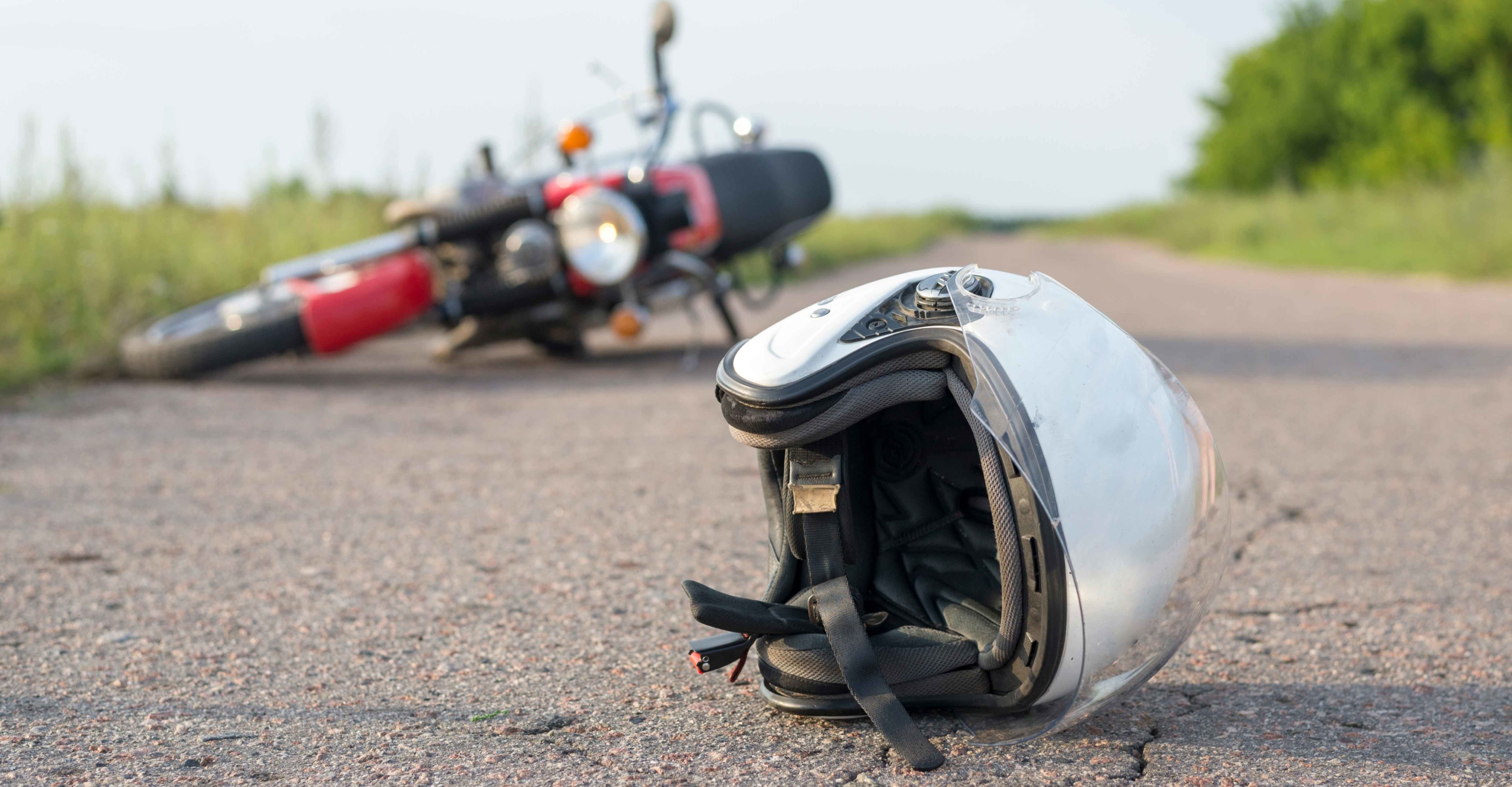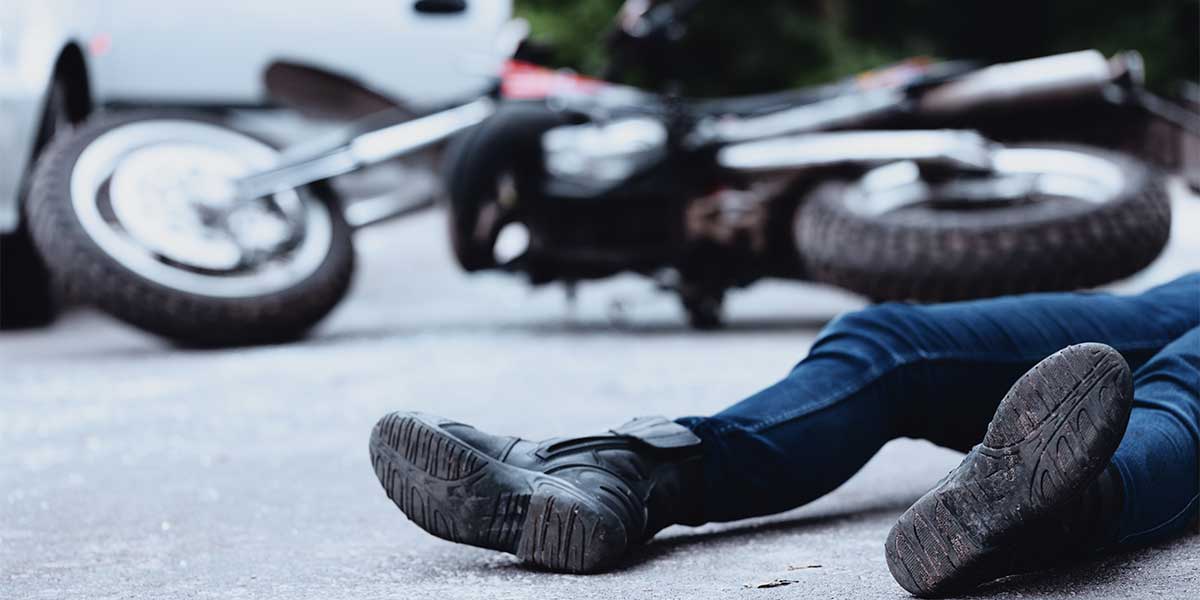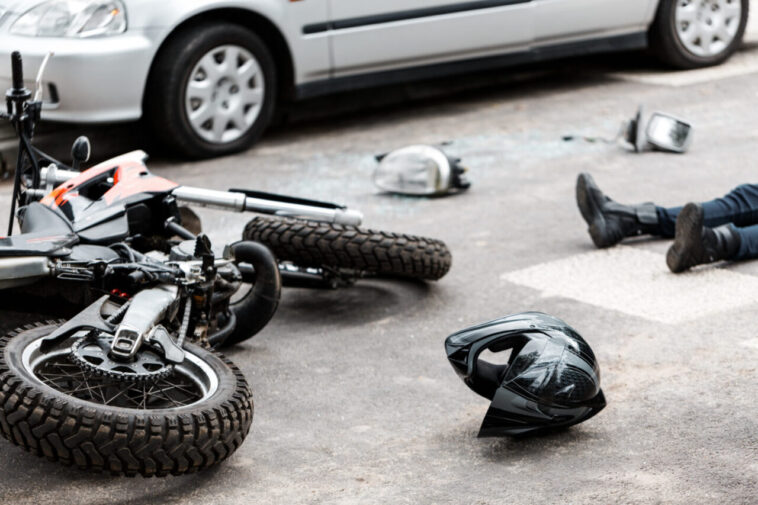According to the National Library of Medicine, injuries to the lower extremity are the most common injuries in a motorcycle accident. These injuries include tibia fractures, ankle and foot injuries. Lower extremity injuries make up 40%-60% of all crash injuries.
1. Tibia fractures
A tibial shaft fracture occurs along the length of the bone, below the knee and above the ankle.
The most common types of tibial shaft fractures include:
- Transverse fracture: In this type of fracture, the break is a straight horizontal line going across the tibial shaft.
- Oblique fracture: This type of fracture has an angled line across the shaft.
- Spiral fracture: The fracture line encircles the shaft. This type of fracture is caused by a twisting force.
- Comminuted fracture: In this type of fracture, the bone breaks into three or more pieces.
- Open fracture: If a bone breaks in such a way that bone fragments stick out through the skin or a wound penetrates down to the broken bone, the fracture is called an open or compound fracture. Open fractures often involve much more damage to the surrounding muscles, tendons, and ligaments.
Tibial shaft fractures can cause further injury and complications, including the following:
- The ends of broken bones are often sharp and can cut or tear surrounding muscles, nerves, or blood vessels.
- Acute compartment syndrome may develop. This is a painful condition that occurs when pressure within the muscles builds to dangerous levels. This pressure can decrease blood flow, which prevents nourishment and oxygen from reaching nerve and muscle cells. Unless it is relieved quickly, permanent disability can result. This needs emergency surgery.
- Open fractures expose the bone to the outside environment and thus, the bone can become infected. These infections are difficult to treat and often require multiple surgeries and long-term antibiotics.
2. Ankle Injuries

There are several types of ankle injuries, some serious enough to require months of healing. These include:
- Ankle Sprain: caused by the stretching or tearing of one or more ligaments, including turning of the foot inward.
- Fractures: fractures are breaks in the bones comprising the ankle joint.
- Stress fractures: these develop over time as a result of overuse of the ankle.
3. Foot injuries
The most common foot injuries include:
- Neuromas: compression of the nerves between the toes. Most often, this occurs between third and fourth toes, a condition called Morton’s neuroma. There can be pain, tingling, and numbness.
- Stress Fracture: a small, hairline crack forms in the bone, causing potentially severe pain. Though stress fractures can occur in any part of the foot, they most often form in the long toe bones. Rest allows the bones to heal, usually in 6 to 8 weeks.
- Plantar Fasciitis: an inflammation of the band of tissue—facscia—connecting the toes to the heel on the bottom of the foot.
- Heel Spurs: Heel spurs occur when calcium deposits build up on the bottom of the heel bone. Often, they don’t cause pain themselves—but they can irritate the plantar fascia, triggering pain along the arch and heel.
- Bunions: This bump of bone and tissue at the base of your big toe forms when the joint connecting it to your foot shifts out of place. Left untreated, bunions can cause pain so severe it limits your ability to walk.
- Sesamoiditis: The sesamoids—two pea-shaped bones lodged in the tendon beneath the ball of the foot—help the big toe move. This is when strain happens on the ball of the foot.
- Achilles Tendinitis: The Achilles tendon can grow thick, inflamed, swollen or painful.
Providing First Aid for Motorcycle Accidents: Essential Steps for Immediate Assistance

Motorcycle accidents can result in severe physical and emotional trauma, leaving victims overwhelmed and unsure of what to do next. Understanding the first steps you can take after a motorcycle accident can significantly impact your recovery.
Timing is Key: When to Hire a Lawyer after a Motorcycle Accident:
After a motorcycle accident, it’s crucial to immediately hire an experienced lawyer when facing severe injuries, uncertainty about liability, uncooperative insurance companies, or seeking maximum compensation and justice.
10 Reasons Why You Should Hire a Motorcycle Attorney:
1. Extensive Legal Expertise and Guidance: Hiring a motorcycle accident lawyer ensures that you have a professional with deep knowledge and expertise in complex legal procedures that may follow.
2. Maximizing Compensation: Skilled motorcycle attorneys understand the intricacies of personal injury law and will work diligently to secure fair compensation for your medical expenses, lost wages, pain, and suffering.
3. Establishing Liability: Proving fault in a motorcycle accident case can be challenging. A knowledgeable attorney will thoroughly investigate the accident and build a strong case to establish liability.
4. Effective Communication with Insurance Companies: Insurance companies often try to minimize their payouts, leaving accident victims with insufficient compensation. A motorcycle attorney will handle all communication with insurance companies and protect your rights, ensuring you receive a fair settlement.
5. Meeting Legal Deadlines: By hiring a lawyer, you can rest assured that all paperwork will be filed correctly and within the prescribed time limits of your state or jurisdiction.
6. Peace of Mind: By entrusting your case to a motorcycle accident attorney, you can focus on your recovery, knowing that a skilled professional is handling the legal aspects of your case.
7. Access to a Network of Experts: Motorcycle attorneys can collaborate with accident reconstruction specialists, medical professionals, and other relevant experts to support your claim.
8. Negotiating Fair Settlements: A motorcycle attorney will leverage their experience and knowledge of personal injury law to ensure you receive the compensation you deserve.
9. Court Representation: If your case proceeds to court, having a motorcycle attorney to represent your interests, present your case, and fight for a favorable outcome is essential.
10. Reduced Stress and Increased Confidence: Dealing with the aftermath of a motorcycle accident can be overwhelming. Hiring a motorcycle attorney alleviates the stress associated with legal proceedings.
Motorcycle Accidents: Injuries, Safety, and Post-Accident Actions:

Motorcycle accidents can lead to a wide range of injuries. It is important to prioritize your safety and take immediate action, ensuring safety at the accident scene:
- Assess the situation: Check yourself and others involved for injuries and call emergency services if necessary.
- Move to a safe area: Stabilize the injured person to prevent further injury. If possible, move to a safe area to avoid further collisions.
- Call for help: Dial emergency services or ask a bystander to call for medical assistance.
- Gather information: Exchange contact and insurance information with the other party involved in the accident. Take photos of the accident scene, including any visible injuries or damage to your motorcycle.
- Document the incident: Write down details of the accident, including the time, location, and weather conditions.
- Seek medical attention: Even if you don’t think your injuries are severe, it is important to seek medical attention.
Motorcycle accidents can be devastating physically and emotionally. Taking immediate first aid steps and prioritizing your well-being is crucial.




